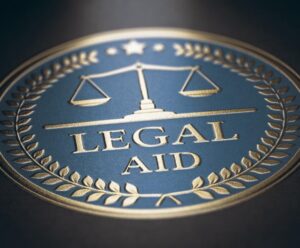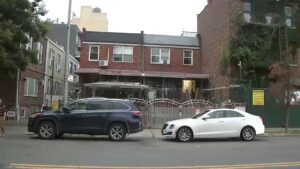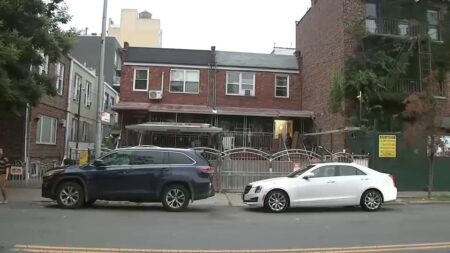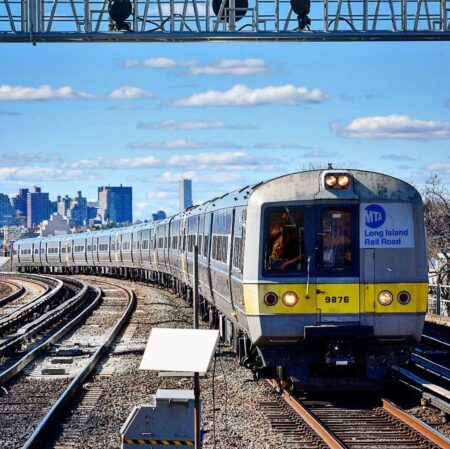New York City officials have introduced a bill aimed at prohibiting pedicabs from operating near Broadway theaters, citing concerns over pedestrian safety and traffic congestion in the bustling Theater District. The proposed legislation seeks to restrict pedicab activity within designated zones surrounding major venues, as the city grapples with increasing crowds and the challenges of managing street-level transportation. If passed, the measure could significantly alter the landscape for both pedicab operators and theatergoers in one of the world’s busiest entertainment hubs.
NYC Officials Propose Pedicab Ban to Enhance Safety Around Broadway Theaters
In a move aimed at bolstering pedestrian safety and streamlining traffic flow in one of the busiest cultural districts of New York City, local authorities have proposed legislation to prohibit pedicabs operating near Broadway theaters. The bill addresses growing concerns over congestion and frequent accidents reported in this entertainment hotspot, where heavy foot traffic combines with an influx of passengers seeking quick rides between venues. City officials argue that the ban will reduce collisions and improve access for emergency vehicles and public transportation.
The proposed legislation outlines specific zones where pedicabs will no longer be permitted, focusing on the Theater District and adjacent thoroughfares. Key points include:
- Restricted Areas: Pedicabs banned within a two-block radius of major Broadway theaters.
- Enforcement: Increased fines and towing for violations to ensure compliance.
- Alternatives: Encouragement of shared electric scooters and bikes as eco-friendly, safer options for short-distance travel.
| Zone | Current Pedicab Activity | Proposed Restrictions |
|---|---|---|
| 42nd Street Corridor | High | Full Ban |
| 7th Avenue Near Theaters | Medium | Full Ban |
| Times Square Plaza | Very High | Full Ban |
Impact on Tourism and Local Businesses Highlighted in Legislative Debate
During the heated legislative debate, several council members emphasized the potential consequences the pedicab ban could have on tourism dynamics. Tour operators and hospitality experts warned that restricting pedicabs near Broadway theaters might reduce unique, eco-friendly transport options preferred by visitors, thereby potentially dampening the overall experience of attending shows in the vibrant Theater District.
Local businesses also voiced concern over the bill’s impact, citing the following challenges:
- Decreased foot traffic for small vendors relying on pedicab passenger spillover
- Potential loss of revenue for pedicab operators who supplement incomes through theater-related rides
- Impact on nearby restaurants and retail shops frequented by tourists opting for pedicab tours
| Stakeholder | Concerns | Potential Impact |
|---|---|---|
| Pedicab Operators | Loss of prime operation zones | Reduced income and job security |
| Local Merchants | Lower visitor engagement in surrounding areas | Declining sales during theater rush hours |
| Tourism Boards | Loss of distinctive NYC experiences | Potential dip in visitor satisfaction ratings |
Community Advocates Call for Designated Pedicab Zones as Alternative Solution
Amid the rising tensions over the proposed pedicab ban near Broadway theaters, community advocates are urging city officials to consider a more balanced approach. Rather than a full prohibition, they suggest the implementation of designated pedicab zones that could allow operators to continue their business while minimizing congestion and safety hazards. These zones would be strategically placed away from the busiest pedestrian thoroughfares yet remain accessible to theatergoers looking for an eco-friendly transport option.
Supporters highlight multiple benefits of designated zones:
- Enhanced pedestrian safety through controlled pedicab operation areas
- Preservation of green transportation alternatives in the heart of the city
- Economic opportunities for pedicab drivers in regulated spaces
- Reduced sidewalk crowding and streamlined foot traffic flow
| Proposed Zone Location | Nearby Landmarks | Expected Benefits |
|---|---|---|
| W. 47th Street Plaza | Shubert Theatre, Times Square | Improved traffic management, tourist convenience |
| 7th Avenue South Corridor | Richard Rodgers Theatre | Safe waiting area, reduced sidewalk congestion |
| Broadway & 50th St. Corner | Lyric Theatre | Controlled pickup/drop-off for riders |
Lawmakers Urged to Balance Entertainment District Access with Pedestrian Security
Lawmakers in New York City are weighing a controversial proposal aimed at curbing pedicab operations near the bustling Broadway theater district. Proponents argue that the surge in pedicab traffic contributes to congestion on already crowded sidewalks, posing safety risks to pedestrians and theatergoers alike. With an ever-growing number of tourists flocking to the area, officials emphasize the need for clear pathways to ensure smooth pedestrian flow without compromising the vibrant atmosphere that defines the entertainment district.
The bill outlines specific restrictions and hopes to balance economic interests with public safety. Key points under consideration include:
- Designated zones where pedicabs are prohibited within a 500-foot radius of major theater entrances.
- Strict enforcement measures with fines for violations to deter illegal operations.
- Collaboration with pedicab companies to develop alternative routes that minimize interference with pedestrian traffic.
| Concern | Proposed Solution |
|---|---|
| Sidewalk congestion | Pedicab exclusion zones near theaters |
| Pedestrian safety | Enforcement of traffic rules and fines |
| Economic impact | Redirect pedicab routes to less crowded areas |
Final Thoughts
As the city moves forward with deliberations on the proposed bill to ban pedicabs near Broadway theaters, stakeholders from the entertainment industry, local businesses, and urban planners will be watching closely. The outcome of this legislation could set a precedent for how New York City balances pedestrian safety, traffic flow, and the unique character of its bustling theater district. Further updates are expected as the bill progresses through City Council discussions and public hearings.











